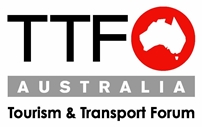TTF Media Release
22/10/2023
REGIONAL RESPITE RUSH! MORE AUSSIE TRAVELLERS FLOCK TO REGIONAL AREAS POST-PANDEMIC
Regional tourism continues to be the success story of Australia’s domestic tourism market with average visitation surging to 9% above pre-pandemic levels, according to new data released by the Tourism & Transport Forum (TTF) Australia.
The latest DSpark report, commissioned by TTF, shows visits by Australian travellers surged for all top 10 regional tourism destinations during the most recent Summer/Autumn period (Dec 2022 – May 2023), compared to pre-Covid.
TTF CEO Margy Osmond said despite the pandemic ending, the trend for Australians to explore their own backyard has increased.
“This data shows the boom in regional tourism wasn’t just a product of border closures but has continued well after the pandemic. More Australians than ever are choosing to holiday in their own backyard and enjoy the spectacular natural beauty of regional areas,” she said.
However, she noted the regional tourism industry faces new challenges, warning governments can’t be complacent.
“The sector is still grappling with the slow return of international visitors, as well as cost-of-living pressures and the ongoing threat of natural disasters, in a highly competitive tourism market. Government and industry must work together to ensure our sector thrives, including operators in regions which haven’t made this Top 10 list, to help drive employment and economic activity across Australia.”
KEY FINDINGS
The report, which analysed anonymised and aggregated mobility data to examine the movement of Australian adults across regional tourism regions (outside of capital cities), also found:
- The most popular regional spot nationally was North Coast NSW, with visitation 4.2% higher than pre-Covid, and Byron Bay/Ballina the most visited area within that region. This was followed by South Coast NSW and Gold Coast in Queensland.
- The biggest growth in popularity within the Top 10 regional destinations, post-Covid was the South West region in WA, namely Margaret River and surrounds, with visitation nearly 16% above pre-Covid levels, followed by the Gold Coast, which was 14.3% above pre-Covid levels.
- Most Australians travelling regionally stayed within their own state, for 3 nights on average, while the most popular destination for Australians travelling interstate was the Gold Coast.
- For Australians under 30, the biggest growth in popularity within the Top 10 regional destinations was the Gold Coast, with visitation 11.7% above pre-Covid levels, followed by Central NSW (11.4% above). The biggest drop in visitation for this age group post-Covid was Victoria’s Great Ocean Road, with visitation 11% below pre-Covid levels.
- For Australians aged 30 – 64, the biggest growth in popularity within the Top 10 regional destinations was WA’s South West region, with visitation 18.8% above pre-Covid levels, followed by the Gold Coast (17.7% above pre-Covid levels).
- For Australians over 65, the biggest growth in popularity within the Top 10 regional destinations was Victoria’s Great Ocean Road, with visitation 17.8% above pre-Covid levels, followed by WA’s South West region (15.1% above pre-Covid levels). The biggest drop for this age group within the Top 10 regional destinations was NSW Central Coast, with visitation 5% below pre-Covid levels.
Top 10 regional destinations nationally, based on number of visitors & length of stay:
| Rank | Regional Tourism Region | Visitation change (compared with pre-Covid) |
| 1 | North Coast (NSW) | 4.2% |
| 2 | South Coast (NSW) | 3.1% |
| 3 | Gold Coast (QLD) | 14.3% |
| 4 | Hunter (NSW) | 7.5% |
| 5 | Sunshine Coast (QLD) | 14% |
| 6 | Australia’s South West (WA) | 15.9% |
| 7 | Peninsula (VIC) | 10.5% |
| 8 | Great Ocean Road (VIC) | 5.8% |
| 9 | Central NSW | 9.4% |
| 10 | Central Coast (NSW) | 2% |
Download the full copy of the report at Beyond the City Limits report (dspark.com.au)
